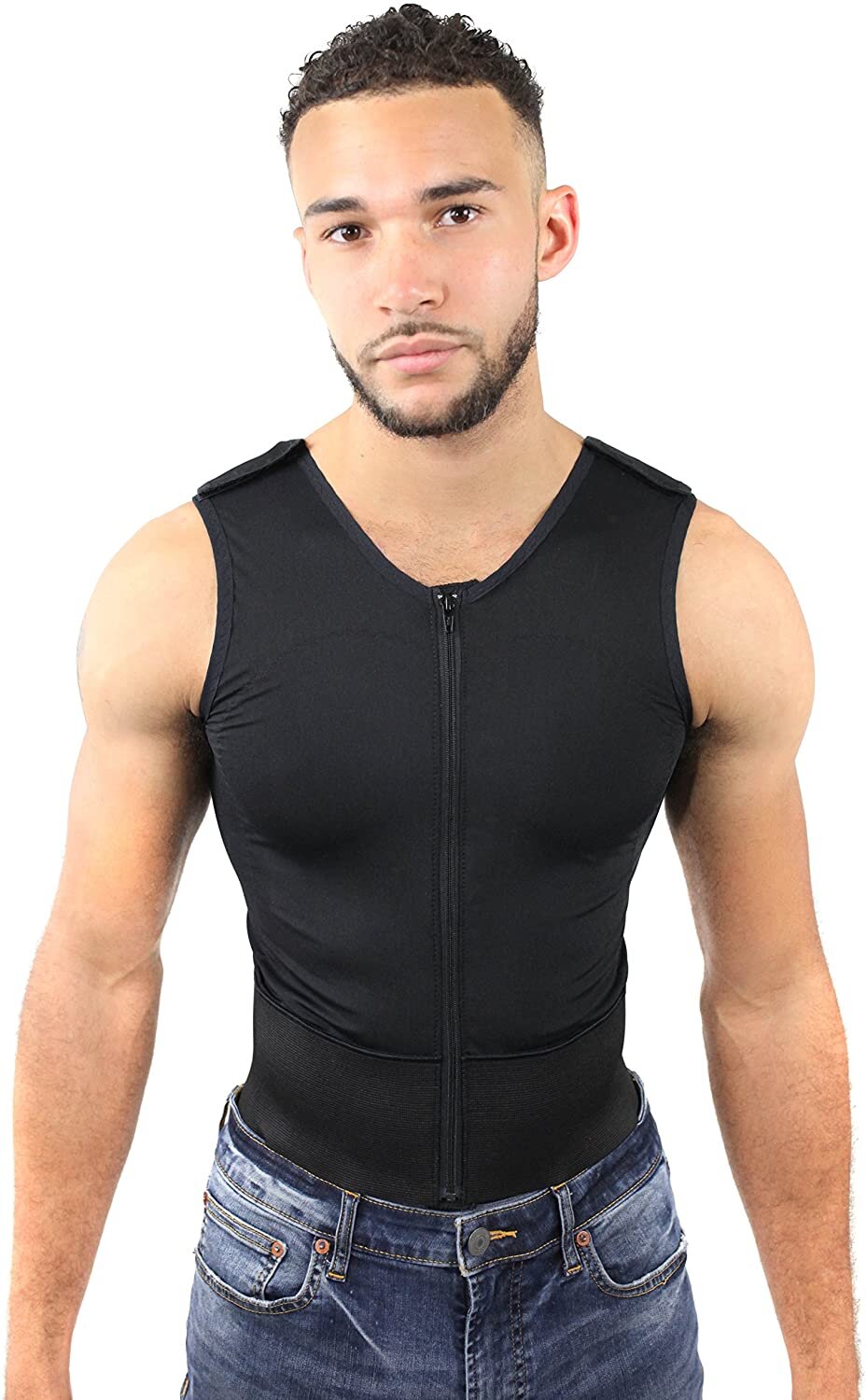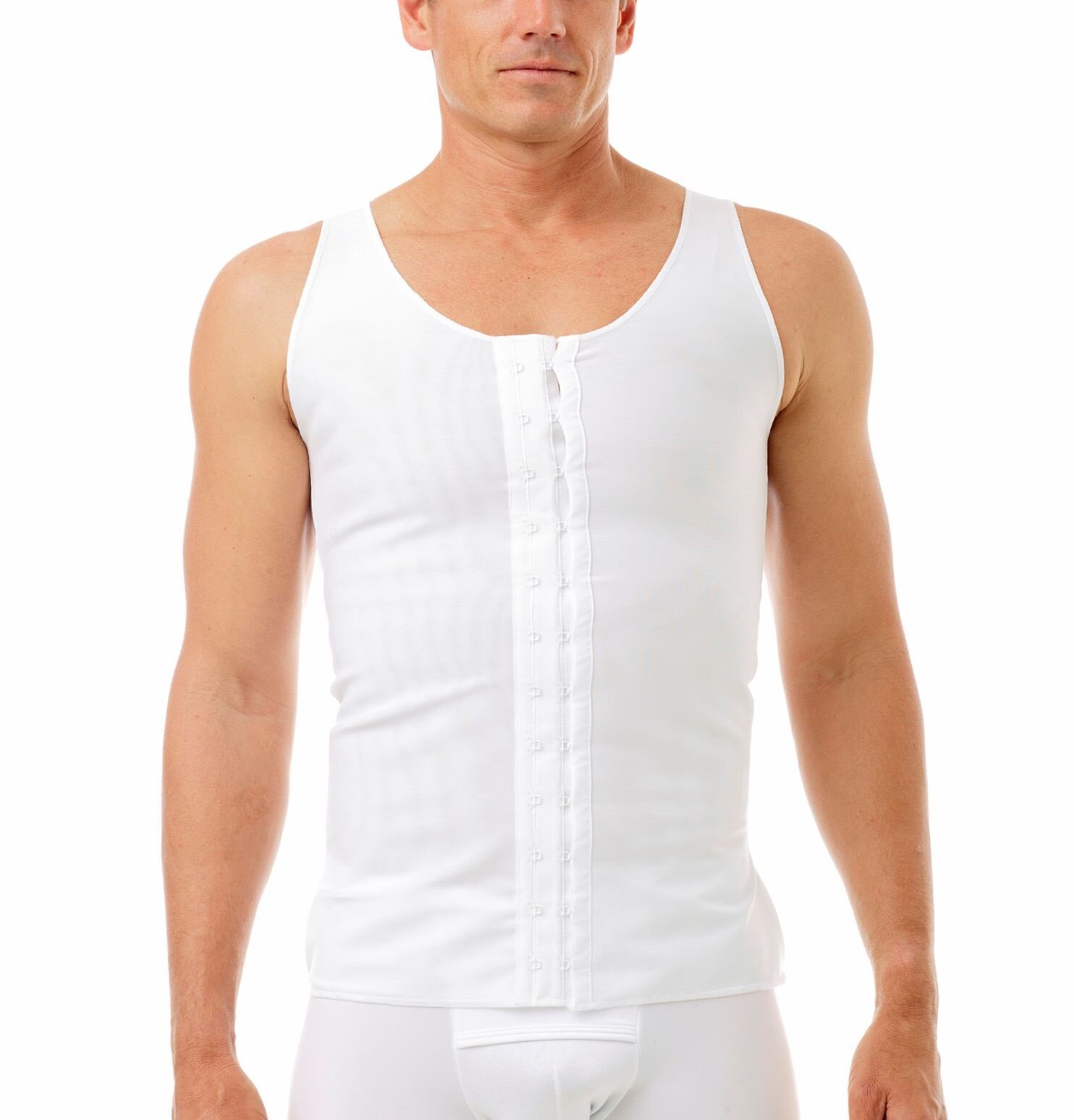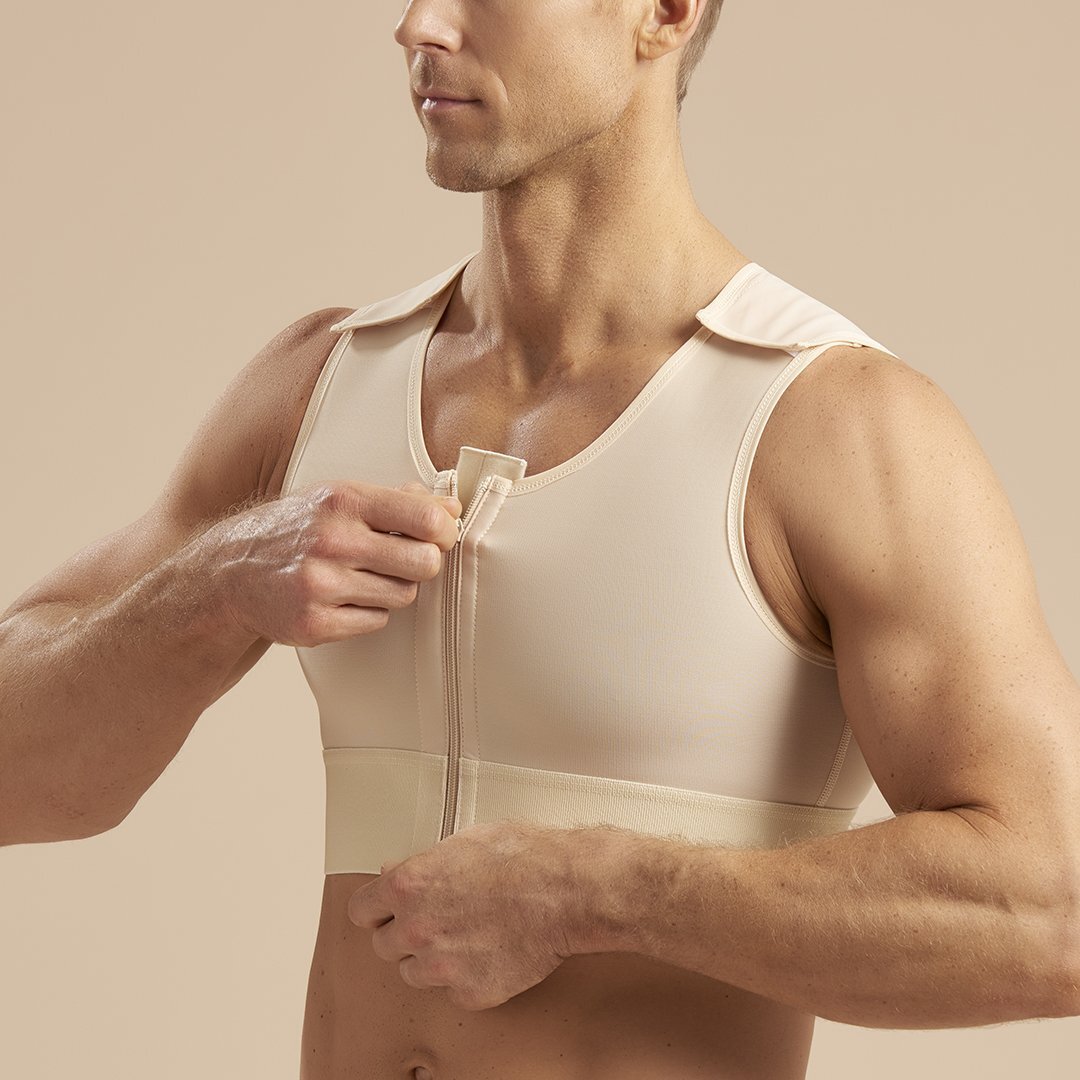Compression Binders After Top Surgery
Author: Dr. Daniel Mckee (MD)
We provide a basic Velcro chest compression binder (free-of-charge) which we will apply to your chest on the day of surgery. The chest binder is worn 24/7 for 1 month ( even when sleeping). Compression binders prevent complications – specifically seromas, and hematomas. For those patients that receive nipple grafts, the compression binder helps protect the fragile healing nipple skin underneath.
What is the Proper Pressure that should be Applied by the Surgical Vest?
The goal is to have the binder provide snug constant pressure. It should provide as much pressure as tolerable to the entire surgical area on the chest, without causing distress, difficulty breathing, or excess rubbing/friction under the arm-pits. Even immediately after surgery, if the binder is causing any of the above issues, it can be loosened if necessary, by loosening the Velcro strip in the front. Otherwise, leave the binder completely alone until the first follow-up appointment at around the 1-week mark from surgery.
What do I do if the Binder is Uncomfortable?
If the binder is causing excess rubbing/digging/discomfort under the armpits, there are several things that you can try.
1) Add some padding (cloth, gauze) between the underarm skin and the binder in order to prevent friction.
2) Using scissors, slightly trim the area of the binder that is rubbing/digging-in.
3) If you have already had the first post-surgery follow-up appointment (about 1 week after surgery), you can switch into another compression vest if you have purchased one to swap into. Maybe the purchased binder will be softer synthetic materials that will feel more comfortable. As long as there is constant pressure to the chest, any material will do. If you chose to purchase a binder, we give several suggestions later in this teaching document.
4) If you have already had the first post-surgery follow-up appointment (about 1 week after surgery), you must keep wearing the compression binder, but you can try wearing it outside-of ( on-top-of) a T-shirt or undershirt. In essence, the T-shirt acts as a padded buffer between your skin and the vest.
Question: How do I make the Binder Stay where it Should?
Answer: Customized Straps:
Binders are meant to provide constant pressure to the whole chest area. However sometimes they can accidently glide downwardly during the recovery period and then they do not achieve their purchase fully. When the binder glides downwardly, it does not provide enough pressure to the most upward part of the chest. The binder that is provided for free at time of surgery does not have shoulder straps unfortunately. Some patients have created their own shoulder straps by modifying the post surgical binder. This is a great idea.
Swelling is Normal after Top Surgery. Why the Binder Helps:
Binders are meant to be worn after surgery for typically 1 month. They should be worn 24/7 even when sleeping. After the first follow-up visit (~1 week after surgery) it will then be safe to take off the binder for the first time. At this time, it should still be worn 24/7 but you will be allowed to have brief breaks from the binder for 2 possible reasons: 1) showering with the chest exposed as instructed, with the binder off, and 2) wash and dry the binder in the washing and drying machine as necessary. For the first month, fluid and swelling and even bleeding wants to re-accumulate in the empty cavity that forms from where chest tissue (gland and fat) was removed under the remaining skin. Inevitably there will be some fluid/swelling under your skin that you may feel and hear during your recovery. The sooner the swelling fluid gets reabsorbed by your body the better (instead of accumulating in your chest surgery area). Elevating the chest above the rest of your body can help reduce chest swelling (lying on your back for example may help). Icing the chest for the first week on top of the binder may help as well. The binder is the main tool that counteracts the swelling in your chest from accumulating. The binder compresses the cavity/space under your chest skin. Wear the binder as much as possible during the first month (and without exception for the first week). These are the only things that can help counteract swelling. We have to wait months for all the swelling to resolve, however we hope that 70% of the swelling dissipates after by the first month.
Top 10 Recommendations if you decide to buy an Additional Surgical Binder:
If you chose to purchase your own compression vest in order to replace the one that we provide you, you may do so and swap binders only after the first follow-up appointment (~1 week after surgery).
1) There is no specific brand that is best.
2) In your online search to purchase a binder from the web, key search terms are: “men” “male” “compression” “post-surgical” “surgical” “vest” “gynecomastia” “ binder”
3) Our office does not sell or recommend specific brands of post-surgery binders
4) The surgical vests that are relevant for top surgery are the same ones that are relevant for gynecomastia chest surgery.
5) If you are to purchase a post-operative binder, we recommend that it does not slide over the head, and that it can be opened from the front ( or back) with a zipper, buttons, or clips.
6) It must open and close in the front or back. Alternatively, it could open and close at the shoulders.
7) We recommend that you purchase the binder ahead of surgery and try it on first and estimate it fitting snug after top surgery to make sure it is anticipated to fit. Patients have purchased the wrong size in the past, and it did not fit when we tried to put it on during the first post-operative follow-up visit.
8) Consider finding a used vest from someone that has had top surgery in the past.
9) Consider modifying one of your existing chest binders by cutting it down the front, and sewing buttons on the front.
10) The binder should provide significant pressure - more pressure than a mere sports-gear spandex top.



I did not Receive Nipple Grafts or Keyhole, can I Remove the Binder Earlier than 1 month?
For the keyhole procedure, swelling can be long-lasting, therefore the binder is especially important to wear the entire 1 month in order to decrease the swelling within the cavity/space created by removing the chest gland/fat. For the double incision mastectomy with nipple graft procedure, the binder has the added benefit of protecting the nipples from friction and rubbing for the first month. For the double incision mastectomy without nipple grafts, usually it is fine to remove the binder at the 3 week mark after surgery, instead of waiting for a whole month, unless there is still a lot of swelling (visually, or by feel). If there is any doubt, just wear the binder the entire 1 month.
1 Month After Chest Surgery:
After 1 month, you may stop wearing the binder permanently. If you still notice any swelling in your chest you can still wear the binder on and off (periodically) if you feel more comfortable doing so, however you do not need to. Wearing the binder longer than 1 month will not cause any complications. Under very rare circumstances, your surgeon may ask you to wear a surgical binder even longer than 1 month; for example if you had excess bleeding or swelling out of the ordinary.
